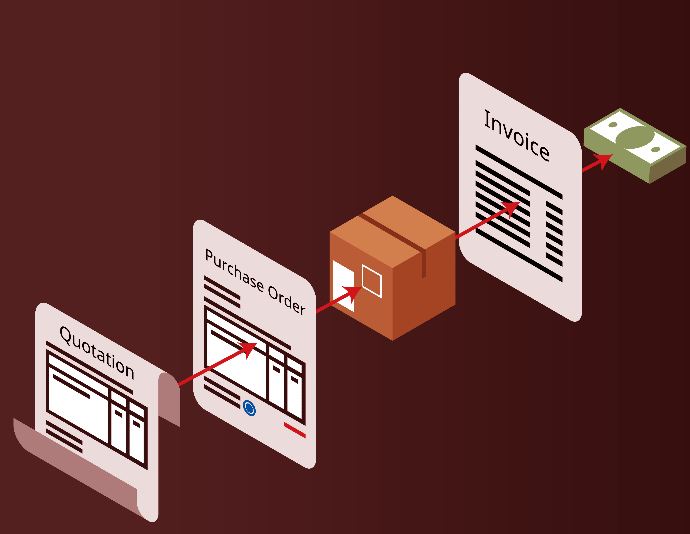Most companies require goods or services for various business purposes. To obtain these products, a company must set up a modernized procurement process to ensure they receive everything they need at the price they’re willing to pay.
Procurement isn’t as simple as entering a store and buying items. Businesses utilize their resources to solicit goods. There are market surveys, financing, and negotiations involved. More often than not, companies set aside a specific budget for procurement. And usually, managers or chief procurement officers hold the responsibility of soliciting the products or services for the company.
The procurement process also entails the following of several steps. As such, business owners and their teams need to create and keep up an efficient process that will benefit them in the long run. Here are a few tips to accomplish that:
Maintain proper invoice records
Any business must keep receipts of anything they purchase for the company and their team members’ well-being. Maintaining a proper paper trail of documents encountered during the process helps the company keep track of everything received.
After every purchase your business makes, expect to get goods received notes (GRN) as well. These documents record the official receipt of the product or service you obtain. They’re usually sent along with invoices, and you and the vendor can refer to them as proof that goods are delivered. The businesses, being the customers, can also use the GRN to record and track inventory.
Your team of auditors or bookkeepers will find this step crucial. The GRN is there as a reference to validate the quality and quantity of the purchased goods. Proper record-keeping may even resolve conflicts between the two parties if an issue arises during and after delivery.
Utilize digital platforms and software
Businesses nowadays invest in technology to make their workflow smoother. Many companies have already automated most of their processes, including their procurement.
Automating your procurement process increases productivity and eliminates errors that may happen if it is done manually. Using software to streamline processes will help reduce the time spent performing otherwise repetitive tasks. Having a digital platform improves collaboration between you and your suppliers, too.
Among the procedures in a procurement process, you need to automate the following:
- Contract approval. It’s common for businesses to store manual contracts in physical filing cabinets. But files may become disorganized. One solution is an automated process that creates a digital repository of both contracts and other documents, making them easier to find.
- Purchase requisition. You can allow your purchasing team to do more by reducing the time it takes for approval and leaving out unnecessary steps.
- Purchase order. Sometimes, even with a purchase order (PO) system, you may encounter difficulties in your practices. Issues may come to light due to a manual system still in place. In contrast, automating the PO cycle allows you to improve your processes while cost-saving, too.
- Invoice management. Manual invoice management may result in misplacement of records, delayed payments, and inadequate transparency. These common problems are avoidable using a digital system that may also include finance tools to assist your productivity. Combine this with a solid automated process will leave less room for issues and other errors.
- Vendor management. Automated systems can help you narrow down vendor options. You can also create better relationships with your vendors by identifying and settling grievances through the system.
You’ll see that a digital platform to automate your procurement process also lets you reduce costs while running it more efficiently. You’ll find you won’t need to purchase more paper or clean your filing cabinets when you have the proper software to help you out.
Build better supplier relationships
Before you even begin to purchase goods, you need to find a supplier suited for your needs. Most people and companies search online for possible candidates. Sometimes, they’ll receive referrals from business partners. Whichever method you use to get ahold of them, you should always build a good relationship with suppliers.
Having solid relationships with your chosen vendors gives you less time starting with negotiations, bids, and other deals. You’re guaranteed that your purchases are of excellent quality and at a decent price point, which your supplier will deliver to you promptly.
There will also be fewer opportunities for maverick spending while your return on investment increases. A professional and respectful relationship between you and your supplier will make the process much smoother for both of you in future transactions.
Assign and educate your team
The procurement process isn’t and shouldn’t be a one-person show. If you don’t have one on your roster, assign team members to act as dedicated procurement officers. Limiting the number of people to purchase your business’s needed goods or services lessens the risk of tail-end or maverick spending.
Before embarking on the process, have a sit-down with your team. Ensure that each one understands the procedure, what needs to be done, and what needs to be achieved. You can create a training course that offers a brief yet fulfilling lesson for your team if you need to. A clear knowledge of their task allows them to go through the procurement process with fewer hiccups or conflicts.
In conclusion
Improving procurement processes to increase efficiency should be one of the goals of any business. It reduces errors and simultaneously makes their existing system operate smoothly. There will be fewer risks that turn up and leave a dent on your workflow or budget if you have a more streamlined process for procurement.

![[pii_pn_8f602395a7053bd2bf7c]](https://redditworldnews.com/wp-content/uploads/2021/05/pii_pn_8f602395a7053bd2bf7c.png)

![[pii_email_e855389d7b371ffab571]](https://redditworldnews.com/wp-content/uploads/2020/12/pii_email_e855389d7b371ffab571.png)